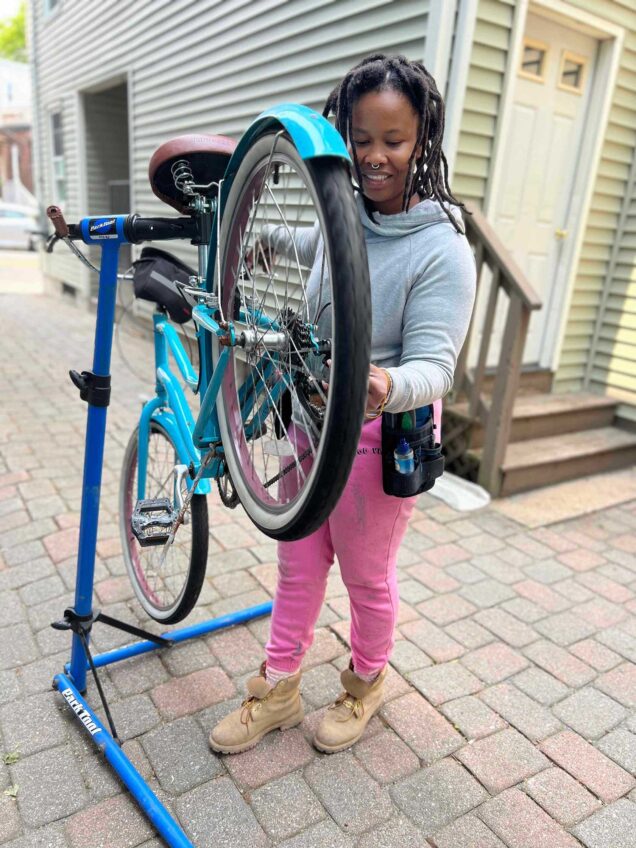
Banner Business Sponsored by The Boston Foundation
Living paycheck to paycheck is a financial situation where an individual or family’s income barely covers essential living expenses such as housing, utilities, groceries, and transportation. If one paycheck were to be missed, it would lead to significant financial strain and difficulty in meeting basic needs. This precarious financial situation leaves little room for saving or investing, making individuals vulnerable to unexpected emergencies or income loss.
According to a survey conducted by Payroll.org, a staggering 78% of Americans find themselves living paycheck to paycheck, marking a 6% increase from the previous year. This means more than three-quarters of the population struggles to save or invest after covering their monthly expenses.
Chawn Payton, a Northwestern Mutual financial advisor, says that living paycheck to paycheck often means “spending the money before it even hits the bank account” and being unable to “level up financially.” This can make it difficult to save for the future or enjoy life in the present.
How Did We Get Here?
The root causes can be attributed to increased spending, which is outpacing income growth. High inflation and rising interest rates are contributing factors. According to the Federal Reserve’s report, 40% of adults experienced a rise in their family’s monthly spending compared to the previous year. In Houston, individuals need to earn $75,088 annually (or $36.10 hourly) to live comfortably and avoid living paycheck to paycheck.
Payton adds that much of the difficulty arises from deeper issues, such as one’s relationship with money. “If you come from a household where you saw your parents live paycheck to paycheck, you may emulate those behaviors,” Payton says. “To address the challenges of living paycheck to paycheck, individuals must adopt proactive measures to improve their financial well-being.”
Budgeting Basics
One key strategy is creating a comprehensive budget that accurately reflects income and expenses. Payton suggests starting with a spending plan rather than a budget, as the term “budget” can often feel restrictive. “Go back through two or three months of your bank statements—normal months, not months where you had major travel or expenses—and print them out,” he advises. From there, categorize your spending into “needs” and “wants” to identify areas for reduction.
By analyzing these spending habits, you can make small but significant adjustments. “You may have 12 subscriptions you forgot about, or you’re spending unnecessarily on luxuries like monthly cosmetic boxes or extra streaming services,” Payton explains. “Reducing discretionary spending can create breathing room in your finances.”
Building an emergency fund is crucial for financial resilience. Setting aside a portion of each paycheck into a dedicated savings account can provide a financial safety net during unexpected hardship, such as medical emergencies or job loss.
Payton suggests automating savings to help people stay consistent: “When saving is automatic, you don’t think about it, and the money grows without extra effort.”
Another effective strategy is seeking additional income through side gigs or part-time work. Payton acknowledges that “not all avenues for extra income are for everybody,” but encourages individuals to explore the growing options available, whether that’s a side hustle or career advancement. “The internet has exposed many different ways to bring in extra income, and you just have to figure out which one is right for you,” he adds.
To help people manage discretionary spending, Payton recommends a more hands-on approach using the cash envelope method. “You allocate literal cash for discretionary expenses, and when the envelope is empty, that’s it,” he says. “Using cash rather than credit or debit cards forces you to think twice before making unnecessary purchases.”
Imagine heading to Best Buy to buy a $1,500 TV on Black Friday. “If you swipe your card, it’s easy to ignore the impact, but if you’re laying down $1,500 in $20 bills, you feel that sting,” Payton says.
Financial guidance from experts can be invaluable. Many organizations offer free or low-cost financial literacy programs, and connecting with a financial advisor like Payton can provide personalized strategies to help you break the paycheck-to-paycheck cycle. As Payton advises, it starts with “acknowledging your financial habits and being mentally ready to make a change.”
This story first appeared on the Defender Network.






